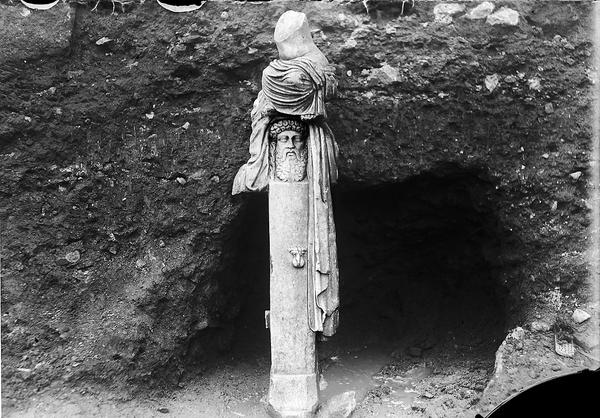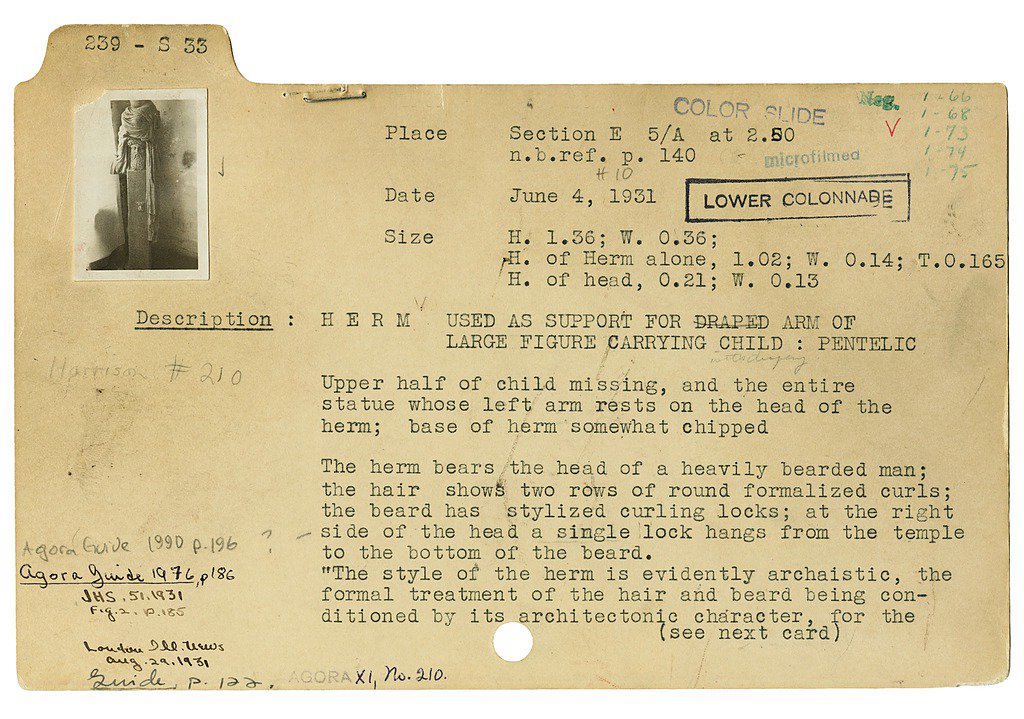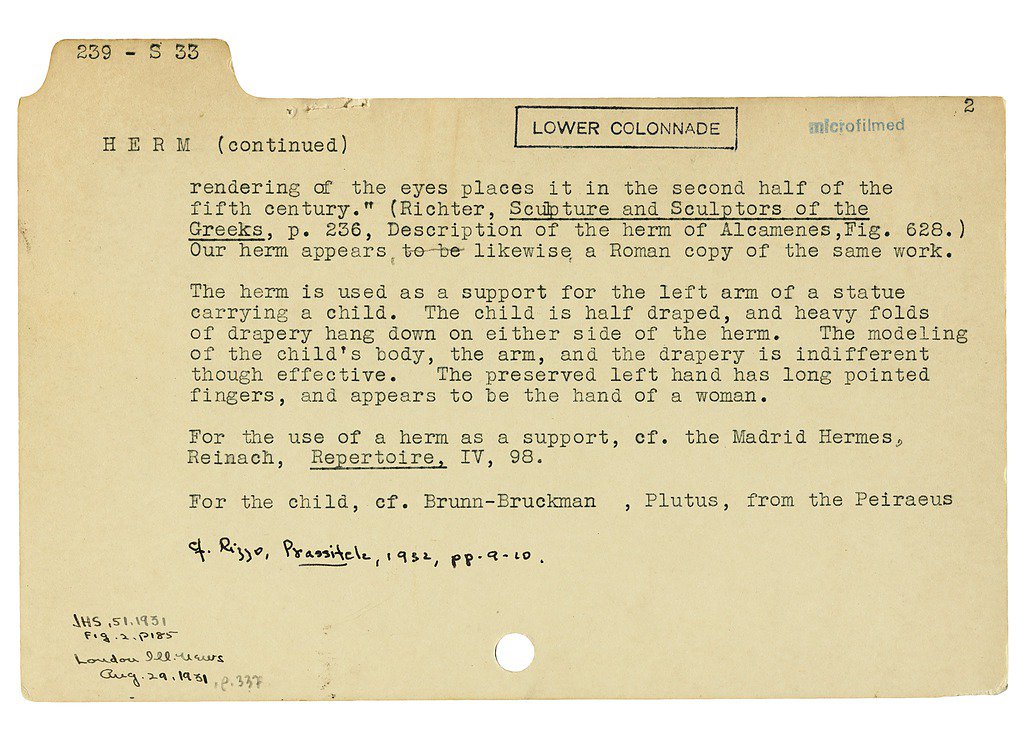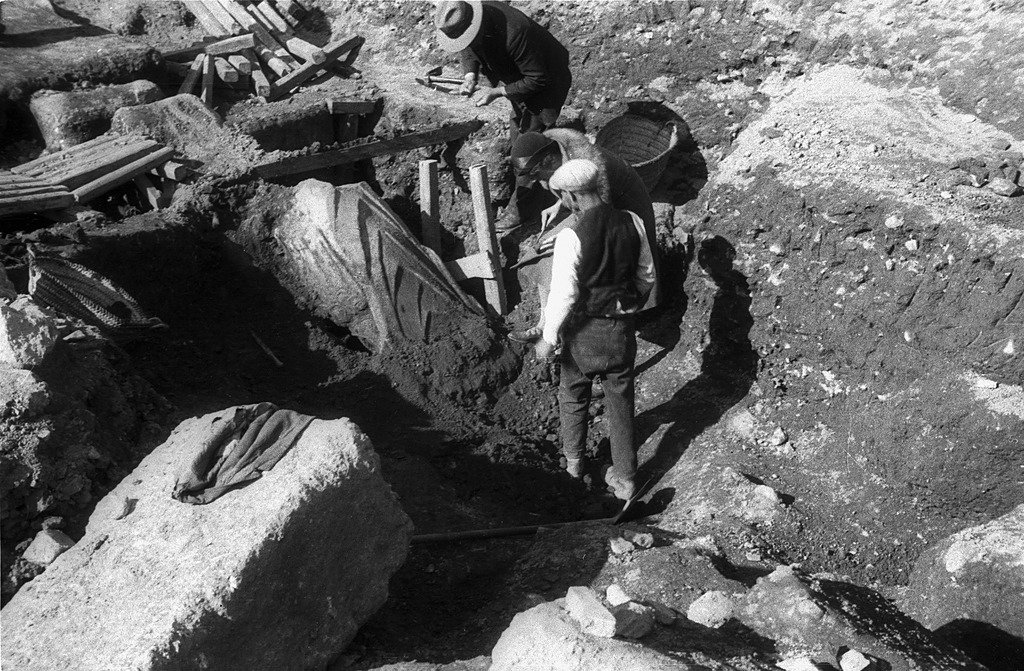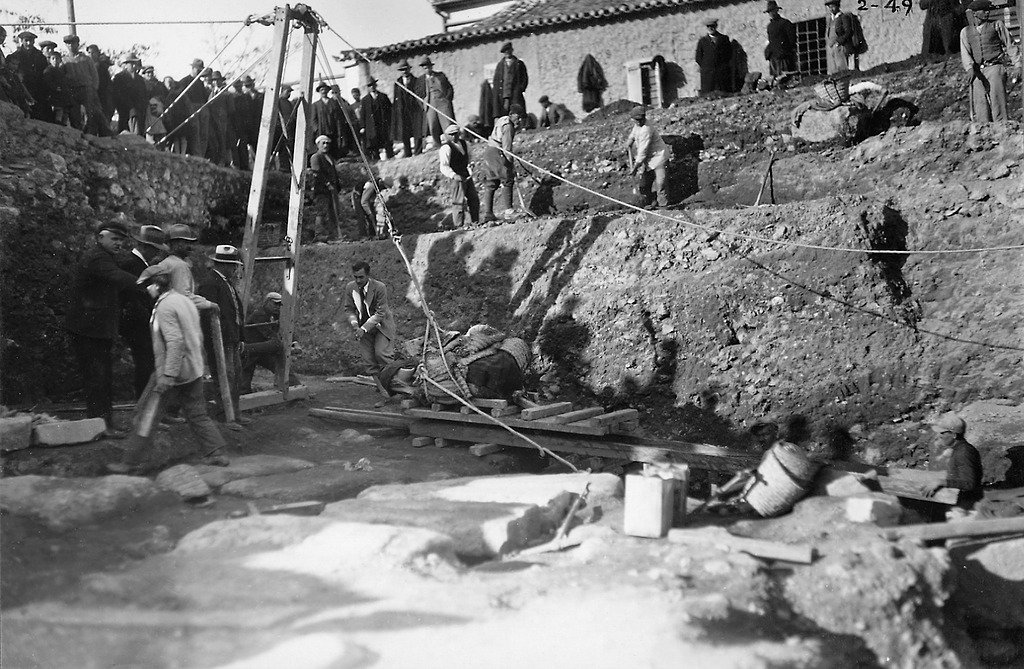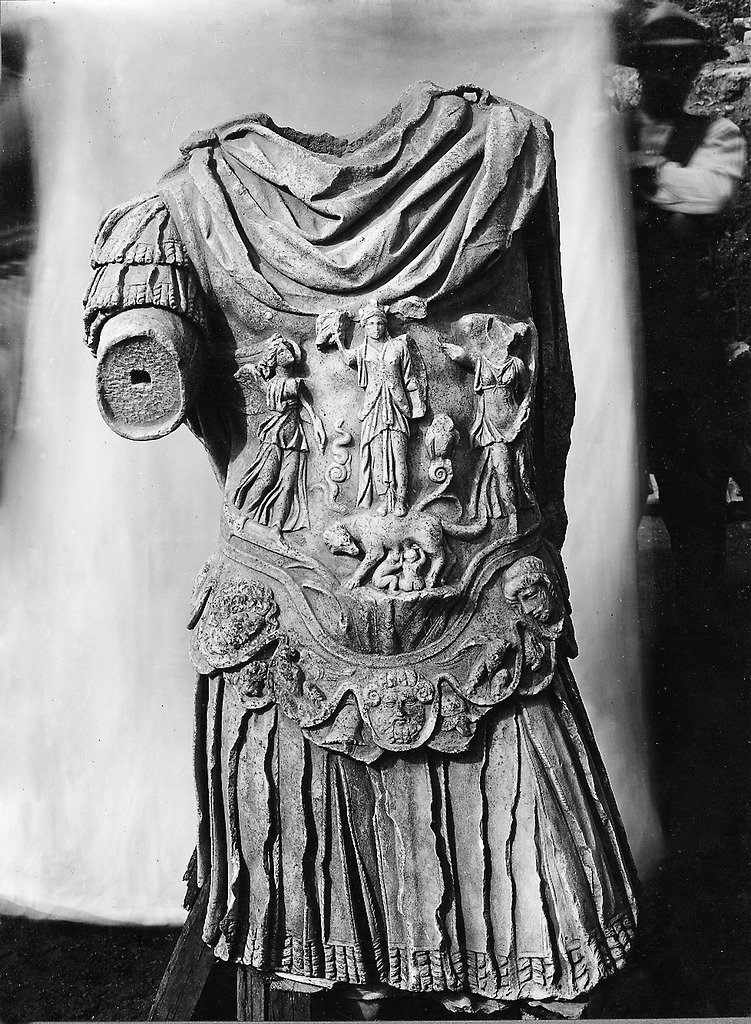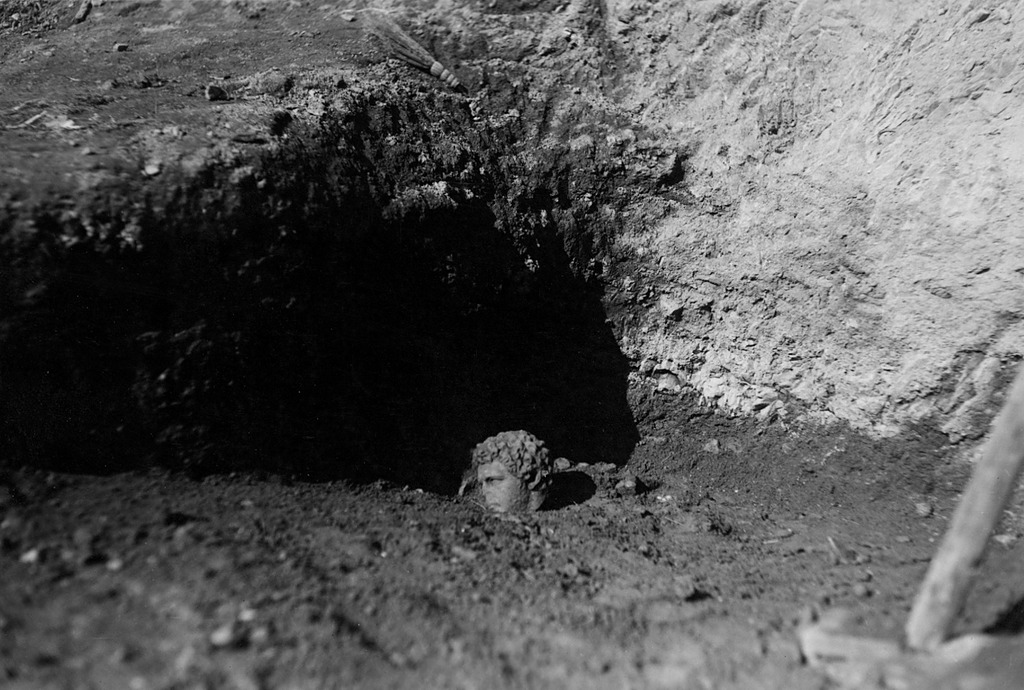The American School of Classical Studies at Athens (ASCSA) on the first day of excavations in the west side of the Agora with the Temple of Hephaestus in the background, Athens, #OTD May 25, 1931 @ASCSAthens
View looking across the area of the ancient Agora on the day excavations began May 25, 1931 by ASCSA in Athens. Section Ε and the Church of Vlassarou in the center with the Acropolis in the background.
Model of the ancient Agora & NW Athens in the 2nd c. AD: along entire course of the Panathenaic Way from Dipylon Gate [bottom] to Acropolis [top] created in 1976 by The American School of Classical Studies in Athens.
Less than two weeks after starting the first Athenian Agora excavations, the ASCSA archeological team discovered on June 4 1931, this Hermaic stele which supported a draped woman holding a child. Excavation photos by T. Leslie Shear & two catalog cards describing the find.
Herma is the singular & hermae the plural for a squared stone pillar with a carved head on top (typically of Hermes) used in ancient Greece as a boundary marker [1]
The following year on February 5 1932, the ASCSA archeological team excavated a fragmented statue of Roman emperor Hadrian on the ancient agora, Athens.
Detail of Hadrian& #39;s breastplate/cuirass: Athena flanked by 2 Victories (also snake & owl). She stands on the she-wolf feeding the twins Romulus and Remus. Below it Zeus-Ammon flanked by imperial eagles & lion heads.
Hadrian statue, 2nd c. A.D discovered in the Athenian agora.
Hadrian statue, 2nd c. A.D discovered in the Athenian agora.

 Read on Twitter
Read on Twitter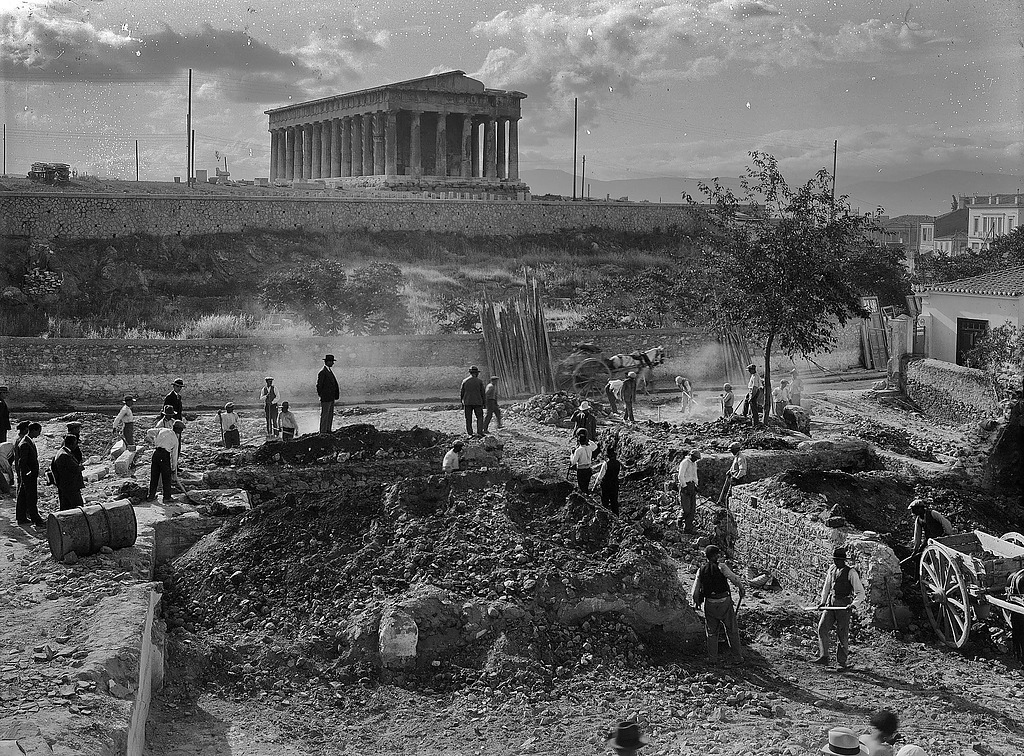
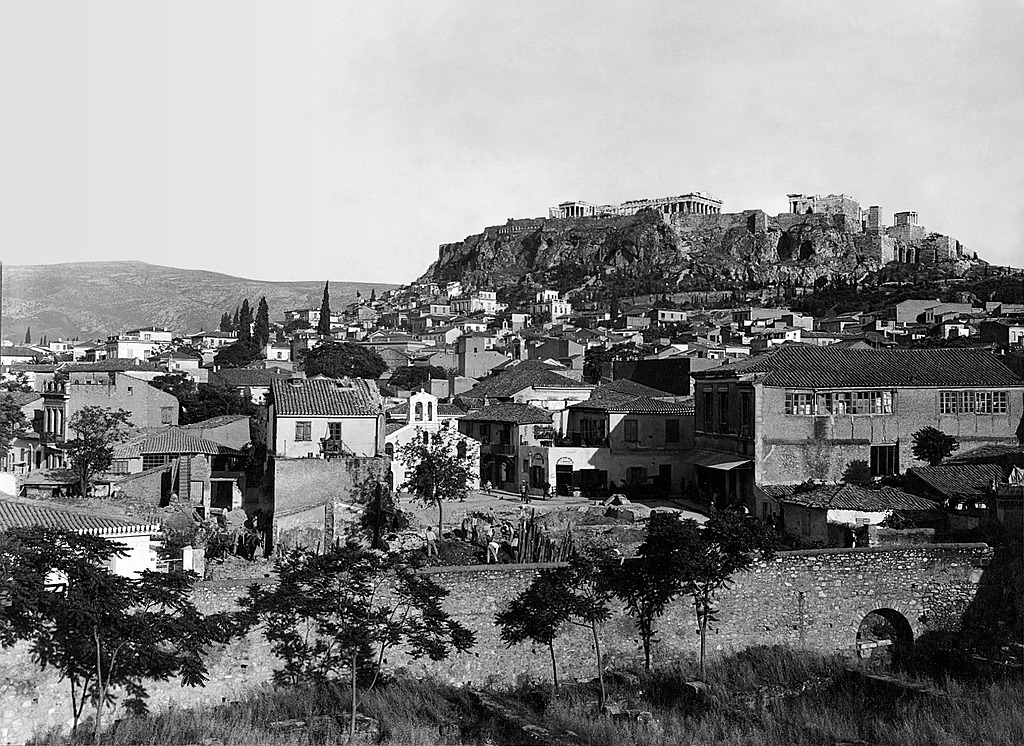
![Model of the ancient Agora & NW Athens in the 2nd c. AD: along entire course of the Panathenaic Way from Dipylon Gate [bottom] to Acropolis [top] created in 1976 by The American School of Classical Studies in Athens. Model of the ancient Agora & NW Athens in the 2nd c. AD: along entire course of the Panathenaic Way from Dipylon Gate [bottom] to Acropolis [top] created in 1976 by The American School of Classical Studies in Athens.](https://pbs.twimg.com/media/EY4kJCIXsAgccaT.jpg)

